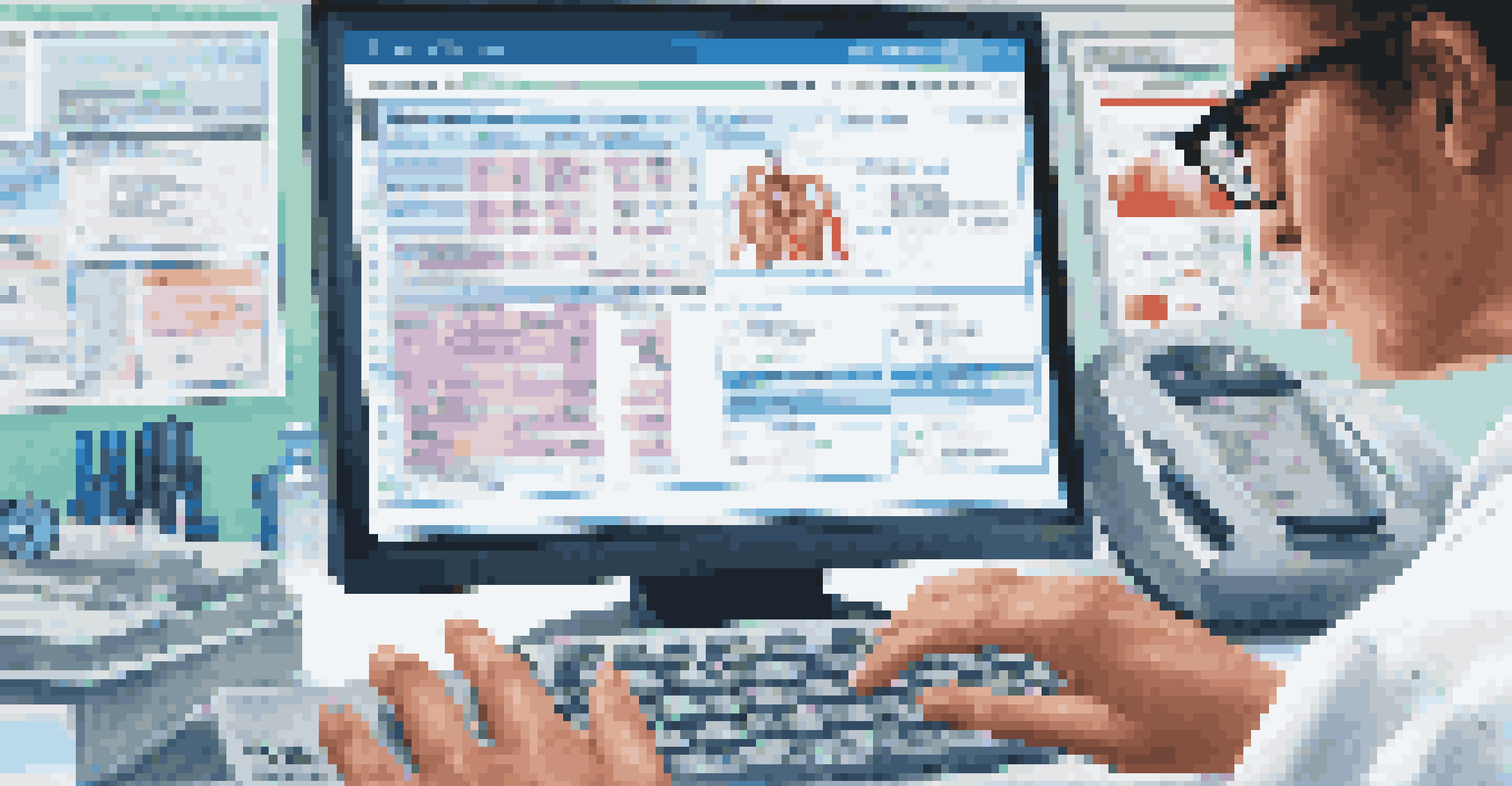EHRs and Their Impact on Reducing Medical Errors in Care

Understanding Electronic Health Records (EHRs)
Electronic Health Records, or EHRs, are digital versions of patients' paper charts. They contain comprehensive patient data, including medical history, medications, and treatment plans. The transition from paper to digital has revolutionized how healthcare providers access and share information.
The greatest medicine of all is teaching people how not to need it.
Think of EHRs as a central hub for patient information that can be accessed in real-time. This accessibility allows for quicker decision-making during patient care, ultimately leading to better outcomes. By consolidating all relevant data, EHRs help eliminate the need for redundant paperwork.
Moreover, EHRs enhance coordination among different healthcare providers. When multiple specialists need to be involved in a patient's care, having a unified record ensures that everyone is on the same page, reducing the chances of miscommunication and errors.
The Role of EHRs in Reducing Medical Errors
One of the primary benefits of EHRs is their ability to minimize medical errors. These errors can range from incorrect medication prescriptions to misdiagnoses, often stemming from poor communication or incomplete information. EHRs help address these issues by providing a comprehensive view of a patient's health.

For example, if a doctor tries to prescribe a medication that a patient is allergic to, the EHR can trigger an alert. This built-in safety feature is crucial in preventing adverse drug reactions, which can be life-threatening. By flagging potential problems before they occur, EHRs act as a safety net for both patients and providers.
EHRs Enhance Patient Safety
Electronic Health Records streamline access to comprehensive patient data, reducing the likelihood of medical errors.
Additionally, EHRs can streamline processes like lab orders and results management. With automated reminders and follow-ups, healthcare professionals can stay on top of their patients' needs, ensuring timely interventions that significantly reduce the likelihood of errors.
Enhancing Communication Among Healthcare Teams
Effective communication is vital in healthcare, and EHRs facilitate this by allowing seamless data sharing among providers. When everyone involved in a patient's care can access the same information, it fosters a collaborative environment where decisions are based on the most accurate data available.
In nothing do men more nearly approach the gods than in giving health to men.
Imagine a scenario where a patient visits multiple specialists. Without EHRs, each doctor might have a fragmented view of the patient's history, leading to conflicting treatment recommendations. However, with EHRs, all the specialists can view the complete picture, ensuring that care is well-coordinated and consistent.
This shared access also allows for better tracking of patient progress over time. When health teams can easily communicate updates and changes, they can make informed decisions that enhance patient safety and reduce the chances of errors occurring.
Data Accuracy and Its Importance in Care
Accurate data entry is critical in healthcare, and EHRs promote this by allowing for standardized formats. By reducing the variability inherent in handwritten notes, EHRs ensure that information is recorded consistently, which is vital for patient safety.
For instance, when a provider inputs a patient's medication list into the EHR, the system can automatically check for interactions with other medications. This real-time validation helps to maintain data integrity and supports healthcare providers in making informed decisions.
Improved Communication Among Providers
EHRs facilitate seamless data sharing, fostering collaboration among healthcare teams to ensure consistent patient care.
Moreover, EHRs can help identify trends and patterns in patient data. By analyzing this information, healthcare providers can spot potential issues before they escalate, thereby preventing medical errors through proactive care.
Patient Engagement and Its Impact on Error Reduction
EHRs not only enhance provider communication but also empower patients to take an active role in their healthcare. Many EHR systems include patient portals that allow individuals to review their medical information, lab results, and treatment plans.
When patients are informed and engaged, they are more likely to ask questions and discuss their concerns with their healthcare providers. This increased awareness helps to clarify any misunderstandings that could lead to errors, ensuring that everyone is aligned on the treatment approach.
Additionally, patients can report discrepancies they notice in their records, serving as an extra layer of oversight. This collaboration between patients and providers can significantly reduce the risk of errors, ultimately leading to safer healthcare experiences.
Challenges and Limitations of EHRs
While EHRs offer numerous benefits, they are not without challenges. One significant issue is the potential for data entry errors, which can occur if providers rush through documentation or are overwhelmed by the system. Such mistakes can lead to incorrect information being recorded, raising the risk of medical errors.
Another concern is the usability of EHR systems. If the interface is complicated or not user-friendly, healthcare providers may struggle to navigate it efficiently. This can lead to frustration, decreased productivity, and ultimately, an increased risk of errors during patient care.
Patient Engagement Reduces Errors
By empowering patients to access and review their health information, EHRs promote active participation that helps clarify treatment plans and prevent misunderstandings.
Moreover, the reliance on technology means that system outages or failures can disrupt access to critical information. In such cases, healthcare providers must rely on their training and instincts, which can be challenging without the supporting data that EHRs typically provide.
The Future of EHRs in Error Reduction
Looking ahead, the evolution of EHR technology holds great promise for further reducing medical errors. Innovations such as artificial intelligence and machine learning can enhance data analysis, identifying potential errors even more effectively than before. These advancements could lead to more proactive care strategies.
Additionally, the integration of EHRs with other health technologies, such as telemedicine and wearable health devices, will provide a more holistic view of patient health. This interconnectedness will allow for better monitoring and quicker responses to emerging health issues.

Ultimately, as EHR systems continue to evolve and improve, they will play an increasingly vital role in ensuring patient safety. By leveraging these technologies, healthcare providers can create a safer environment that significantly minimizes the occurrence of medical errors.